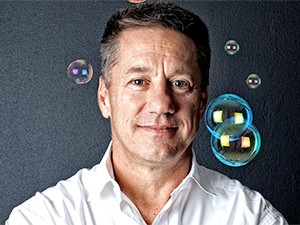
The Institute of Security Studies recently released a report that looked into the issues around water provision and supply in South Africa. Entitled 'Parched Prospects: The emerging water crisis in South Africa', the report revealed that neglect, abuse and climate change are among the many factors impacting water supply across the country. The report revealed a growing threat to river ecosystems, with around 25 percent of the 223 in a critical state. Statistics show that South Africans use around 235 litres of water a day compared with the international average of 173 litres a day. The situation is as dire as that of electricity and already there is water loadshedding underway in KwaZulu-Natal. It's time for South Africa to sit up and smell the waste in the riverbed...
"I think the public needs to become more aware of the water situation," says Bruce Jones, commercial director at Cirrus Water Management. "We are not entering a crisis, we are in it. The thing is, people need to feel the pain before they switch to a new technology and we are going through an education phase at the moment. It's a lot like the electricity issue - people didn't know about generators and solar power until loadshedding. Now that watershedding is already happening in places like KZN, people are recognising the need to become self-sufficient."
Cirrus Water Management has tackled the challenge and invented a solution that actually creates water out of thin air. Inspired by the need for sustainable solutions and driven by a desire to mitigate the litter and waste caused by bottled water, the organisation developed a harvesting technology that generates clean drinking water using the basic principles of cold and condensation.
"Three parties were involved in the development of our solution," says Jones. "A microbiology student at Rhodes studied the notoriously bad water there and looked for an alternative to bottled water. Her father thought there must be a cheaper way of producing the bottle quality water he was buying for her and started investigating atmospheric water generation. They discovered the solution was already in the public domain, so they bought a few models and looked into ways of designing and manufacturing them on a larger scale."
Bottles, bottles everywhere
Jones had just completed a Cape to Cairo bike ride and had been disillusioned by the litter on the side of the road, many of it from bottled water. He was searching for a sustainable way of producing drinking water when the father and daughter team needed both money and knowhow. It was a perfect fit.
"We started commercialising the venture and it led to where we are today with products that have been designed and manufactured locally," says Jones. "The units are based on the cooling-condensation principle with the air drawn into the machine's condensation chamber, cooled to a temperature where the water vapour condenses and then harvesting the resultant water. It works on a similar principle to the split air-conditioning systems with the machine located externally and food grade pipes transporting the water internally to simple taps or chilled water dispensers."
The solution is aimed at the B2B space and uptake has been predominantly with organisations that have difficulty accessing clean water in remote areas - boreholes are dry or contaminated, the cost of bringing in bottled water is prohibitive and the carbon footprint is exorbitant.
"We have a standard module that produces around 100 litres a day at a cost of R90k as an initial capital outlay," says Jones. "This capital cost is a mind-set that people have to get used to and we tend to compare our costs to those of a bottle of water. The latter costs around R15 to R20 per 500ml and with our solution, this drops to 70c a litre. If the capital costs are funded, this rises to R1.50 per litre until those are recouped. When we talk affordability, we compare to bottled water as municipal water is highly subsidised and costs around 2c a litre."
It's an affordable solution when compared with packaged water.
"Depending on demand, we can increase provision beyond 100 litres a day by supplying numerous modules and packaging them into a container we call a plant," says Jones. "For a commercial building that supplies its staff with bottled water, this is a supercheap alternative."
Statistics show that South Africans use around 235 litres of water a day compared with the international average of 173 litres a day.
The Cirrus Water Management system works well in water-distressed or previously disadvantaged communities, but requires funding for the initial capital investment. Jones wants to work with corporates as part of their CSI initiatives where they pay for the machines and the communities ultimately benefit.
"One concept is to have a water shop where residents can get their water from the system either for free or at a highly subsidised rate," he says. "Instead of having to walk for miles, they can get good, clean water in the area. This can potentially transform communities and we are keen to work with corporates to turn this into a reality."
While power and cost may limit rural uptake, the solution is a sustainable alternative to shipping vast quantities of bottled water across landscapes and into landfills and can potentially be implemented by both the corporate and the consumer over time.
This article was first published in the [March 2016] edition of ITWeb Brainstorm magazine. To read more, go to the Brainstorm website.
Share